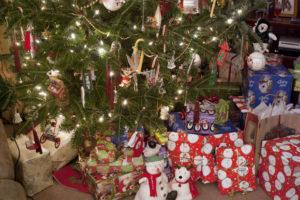- The Impact of Hearing Aids on Veterans’ Lives - February 15, 2024
- Hearing Health: A New Year’s Resolution for a Vibrant Life - January 16, 2024
- Unraveling Misconceptions About Hearing Loss - December 12, 2023
Monday, November 10, 2014 by Susan Fenrich & Michelle Walding
Here is some Sound Advice for shopping for your babies and children this Holiday Season. Parents and Grandparents, you need to 
Federal and expert guidelines say noise above 100 dB can damage hearing in less than 15 minutes. The American Society of Testing and Materials lists the federal threshold for noise exposure be no more than 85 dB for no more than 8 hours. Toys are required to meet standards set by this group, but are often tested at a further distance than even and adult’s arm length.
The Sight and Hearing Association, or SHA, is a non-profit organization that annually lists the Noisiest Toys. The leading offender this year is the Fisher-Price Laugh & Learn Puppy’s Piano. When set at the highest level, this toy, marketed for ages 6 to 36 months, barks at an astounding and potentially damaging 104.4 decibels (dB). Other potentially damaging toys on past lists include Disney Baby Einstein/Take along tunes intended for babies just 3 months and up. While this plays classical music, it is perceived as playing at rock concert levels of 114.8 dB when held up to the ear. At baby’s short arm length, roughly 10 inches from the speaker, it’s still 88.1 dB! The “tween” set, ages 8 to 12 yrs., may like the Hasbro Twister Dance Rave, at 107.9 dBs, while the younger set may have Mattel’s Dora Rocks: Singing Microphone, at 89.5 dBs, on their wish list.
Shoppers can do a number of things to test toys before purchasing. First of all, push buttons, shake rattles, and check volume control knobs as you walk through the store. Too loud for you is too loud for your child. If your child receives a noisy toy as a gift, place clear packing tape over the speaker, and tape or even glue any volume knobs into a lower loudness setting.
For more information, check out SHA’s Facebook site at Sight & Hearing Association. This is where we obtained the information for this article.
